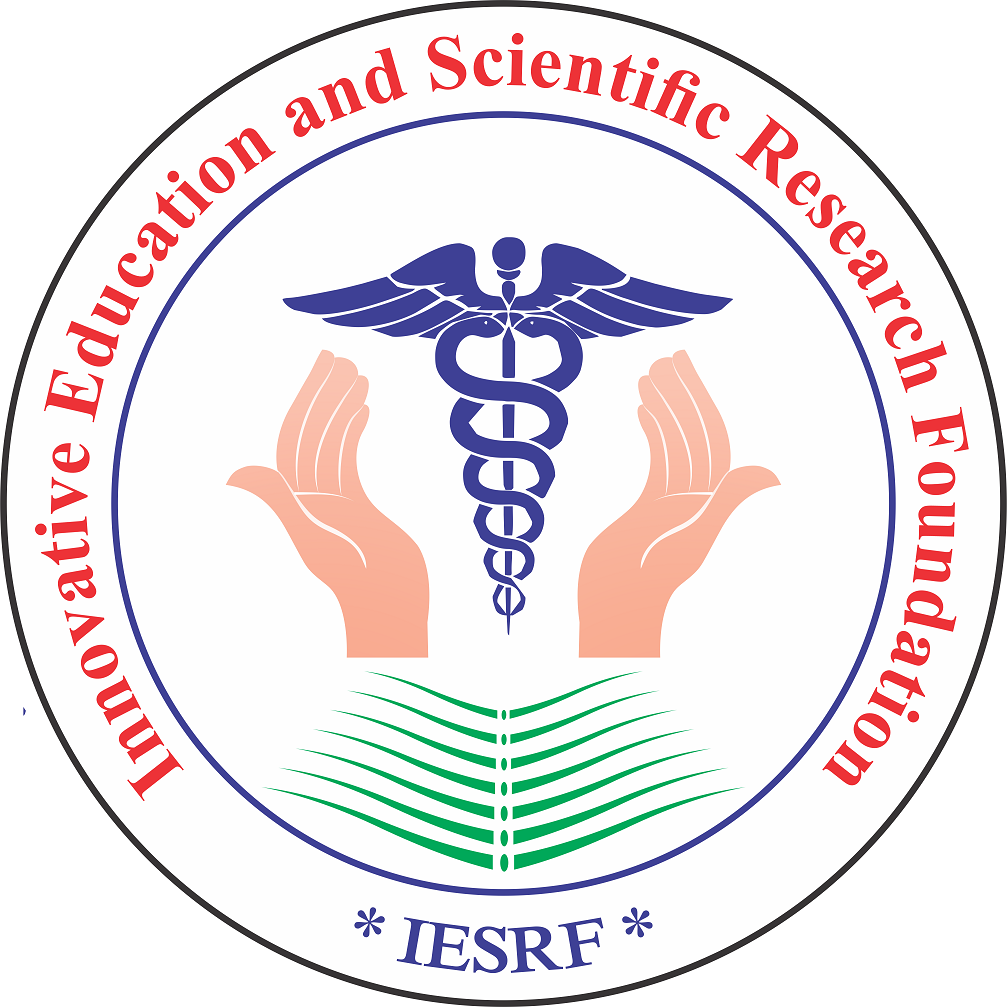- Visibility 22 Views
- Downloads 12 Downloads
- Permissions
- DOI 10.18231/j.ijpo.12959.1760415900
-
CrossMark
- Citation
Association of serum prolactin levels with benign and malignant breast conditions and its utility as a predictor of breast cancer
Background: The global burden of breast cancer is increasing, and it has become the most common malignancy in the female sex worldwide with increasing incidence of young onset breast cancer. Cheap and effective screening modalities are needed to reduce the mortality and morbidity associated with the disease and its treatment. Prolactin’s role in breast oncogenesis and tumor progression has been established. Further studies are required to determine the association of prolactin levels with both benign and malignant breast conditions and if prolactin levels change on treating those conditions.
Methods: Recent literature was reviewed to formulate the method of the study. Serum prolactin levels were sent at the time of diagnosing benign and malignant breast diseases, and after one month of surgery or starting conservative treatment. Statistical tests were applied to determine the cut off value to discriminate benign and malignant breast diseases and whether the associations of serum prolactin levels with benign and malignant diseases were significant.
Results: The receiver operating characteristics curve analysis yielded a serum prolactin level cut-off value of 15.78 ng/mL at the time of diagnosis. Around 85.83% of the patients with benign breast diseases had serum prolactin levels lower than 15.78 ng/mL and around 85.77% of the patients with malignant breast diseases had serum prolactin levels greater than 15.78 ng/mL. The mean prolactin levels decreased significantly one month post treatment.
Conclusion: The rationale of using serum prolactin levels as a screening tool for breast cancer, discriminator between benign and malignant breast diseases and a monitoring tool to check the response of management have been discussed.
References
- Anastasiadi Z, Lianos GD, Ignatiadou E, Harissis HV, Mitsis M. Breast cancer in young women: an overview. Updates Surg. 2017;69(3):313–7. https://doi.org/10.1007/s13304-017-0424-1
[Google Scholar] - Houghton SC, Hankinson SE. Cancer Progress and Priorities: Breast Cancer. Cancer Epidemiol Biomarkers Prev. 2021;30(5):822–44. https://doi.org/10.1158/1055-9965.EPI-20-1193
[Google Scholar] - Sung H, Ferlay J, Siegel RL, Laversanne M, Soerjomataram I, Jemal A, et al. Global Cancer Statistics 2020: GLOBOCAN Estimates of Incidence and Mortality Worldwide for 36 Cancers in 185 Countries. CA Cancer J Clin. 2021;71(3):209–49. https://doi.org/10.3322/caac.21660
[Google Scholar] - Clevenger CV, Rui H. Breast cancer and prolactin: new mechanisms and models. Endocrinology. 2022;163(1):bqac122. https://doi.org/10.1210/endocr/bqac122
[Google Scholar] - Das M, Gogoi C. Pool vs single sample determination of serum prolactin to explore venipuncture-associated stress-induced variation. Sci Rep. 2023;13(1):113. https://doi.org/10.1038/s41598-
[Google Scholar] 022-27051-8 - Melmed S, Casanueva FF, Hoffman AR, Kleinberg DL, Montori VM, Schlechte JA, et al. Diagnosis and treatment of hyperprolactinemia: an Endocrine Society clinical practice guideline. J Clin Endocrinol Metab. 2011;96(2):273–88. https://doi.org/10.1210/jc.2010-1692
[Google Scholar] - Koo MM, von Wagner C, Abel GA, McPhail S, Rubin GP, Lyratzopoulos G. Typical and atypical presenting symptoms of breast cancer and their associations with diagnostic intervals: evidence from a national audit of cancer diagnosis. Cancer Epidemiol. 2017;48:140–6. https://doi.org/10.1016/j.canep.2017.04.010
[Google Scholar] - Tworoger SS, Eliassen AH, Zhang X, Qian J, Sluss PM, Rosner BA, et al. A 20-year prospective study of plasma prolactin as a risk marker of breast cancer development. Cancer Res. 2013;73(15):4810–9. https://doi.org/10.1158/0008-5472.CAN-13-
[Google Scholar] - Gabrielson M, Ubhayasekera K, Ek B, Andersson R, Enerbäck C, Jernström H. Inclusion of plasma prolactin levels in current risk prediction models of premenopausal and postmenopausal breast cancer. JNCI Cancer Spectr. 2018;2(4):pky055. https://doi.org/
- 1093/jncics/pky055.
- Aranha AF, Dos Anjos LG, Turri JA, de Andrade JM, Carreira AC, Simões MJ. Impact of the prolactin levels in breast cancer: a systematic review and meta-analysis. Gynecol Endocrinol. 2022;38(5):385–90. https://doi.org/ 10.1080/09513590.2022.2047173
[Google Scholar] - Hachim IY, Hachim MY, Lopez VM, Lebrun JJ, Ali S. Prolactin receptor expression is an independent favorable prognostic marker in human breast cancer. Appl Immunohistochem Mol Morphol. 252 Vatsal et al. / Indian Journal of Pathology and Oncology 2025;12(3):247–252 2015;24(3):238–45. https://doi.org/10.1097/PAI.0000000000000178
[Google Scholar] - Kim J, Lee H, Park JY, Choi YJ. Estrogens and breast cancer. Ann Oncol. 2024;36(2):134–48. https://doi.org/ 10.1016/j.annonc.2024.10.824
[Google Scholar] - McMurray RW. Estrogen, prolactin, and autoimmunity: actions and interactions. Int Immunopharmacol. 2001;1(6):995–1008. https://doi.org/ 10.1016/s1567-5769(01)00045-5
[Google Scholar] - Perks CM, Keith AJ, Goodhew KL, Savage PB, Winters ZE, Holly JM. Prolactin acts as a potent survival factor for human breast cancer cell lines. Br J Cancer. 2004;91(2):305–11. https://doi.org/10.1038/sj.bjc.6601947
[Google Scholar] - Rahman T, Sahrmann JM, Olsen MA, Nickel KB, Miller JP, Ma C, et al. Risk of breast cancer with prolactin-elevating antipsychotic drugs: an observational study of US women (ages 18–64 years). J Clin Psychopharmacol. 2022;42(1):7–16. Https://doi.org/
- 1097/JCP.0000000000001513
- Lopez Vicchi F, Becu-Villalobos D. Prolactin: the bright and the dark side. Endocrinology. 2017;158(6):1556–9. https://doi.org/10.1210/en.2017-00184
[Google Scholar]
How to Cite This Article
Vancouver
Vatsal P, Chaudhary AK, Katiar V, Khan L, Verma JK, Verma YN, Shukla1 P. Association of serum prolactin levels with benign and malignant breast conditions and its utility as a predictor of breast cancer [Internet]. Indian J Pathol Oncol. 2025 [cited 2025 Oct 18];12(3):247-252. Available from: https://doi.org/10.18231/j.ijpo.12959.1760415900
APA
Vatsal, P., Chaudhary, A. K., Katiar, V., Khan, L., Verma, J. K., Verma, Y. N., Shukla1, P. (2025). Association of serum prolactin levels with benign and malignant breast conditions and its utility as a predictor of breast cancer. Indian J Pathol Oncol, 12(3), 247-252. https://doi.org/10.18231/j.ijpo.12959.1760415900
MLA
Vatsal, Pavani, Chaudhary, Ashish Kumar, Katiar, Vikash, Khan, Lubna, Verma, Jitendra Kumar, Verma, Yogendra Narayan, Shukla1, Priyesh. "Association of serum prolactin levels with benign and malignant breast conditions and its utility as a predictor of breast cancer." Indian J Pathol Oncol, vol. 12, no. 3, 2025, pp. 247-252. https://doi.org/10.18231/j.ijpo.12959.1760415900
Chicago
Vatsal, P., Chaudhary, A. K., Katiar, V., Khan, L., Verma, J. K., Verma, Y. N., Shukla1, P.. "Association of serum prolactin levels with benign and malignant breast conditions and its utility as a predictor of breast cancer." Indian J Pathol Oncol 12, no. 3 (2025): 247-252. https://doi.org/10.18231/j.ijpo.12959.1760415900
